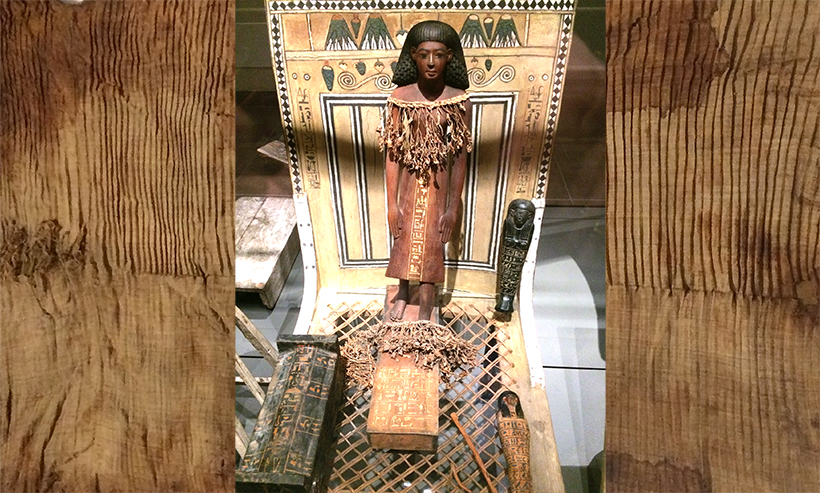
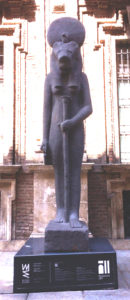
I spent most of last May in Italy with my sister at her farm near Turin, and, by a fluke of scheduling, finally got to wander around Turin’s legendary Museo Egizio, reputed to have the best collection of Egyptian artefacts outside of Cairo.
Due to the vagaries of flying on points, I arrived the day before she did, so I booked into a hotel, had a good night’s sleep and spent the day at the Museo.
The Museo’s contents blew my mind. There’s way too much there to see in one day, so (surprise) I focused on textiles. And even just the textiles had me wandering around in a daze, shooting left, right and centre with my phone camera, eventually ignoring most of the descriptions. And regretting that I had forgotten to get a set of supplementary lenses for my iPhone so that I could get decent close-ups & wide-angle shots.
Being a cat person, I was pleased and amused to see giant images of the goddess Sekhmet flanking the entrance. Time-worn and far from home, she still radiates a fierce dignity as she stands guard over this alien place.
The Gebelein textile
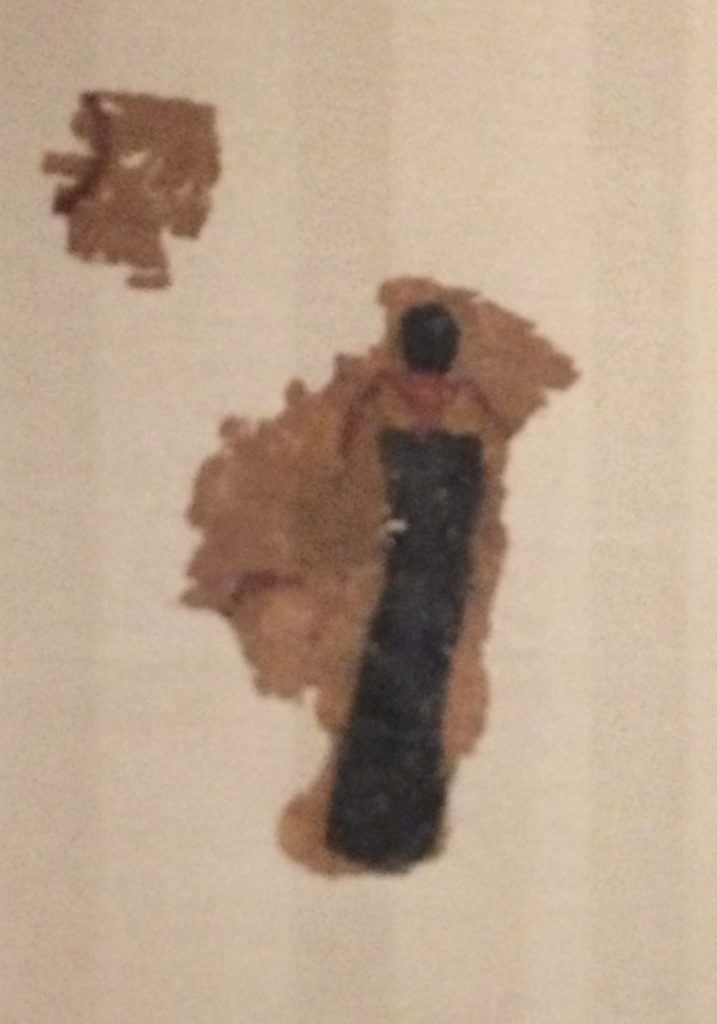
Anyway, there are SO many more surviving fabrics than I expected, starting with the Gebelein textile, which is the second object in the main gallery (the first object is, unsurprisingly, a mummy). The textile is painted, something like 5600 years old and the oldest piece of fabric in the collection. It’s fragmentary; of the parts that survive, my favourite is this charming little dancing figure.
The pleated dresses
More complete, and much more exciting are the pleated linen dresses. The Museo has about a dozen. I had no idea that they existed, never mind that that many survive!
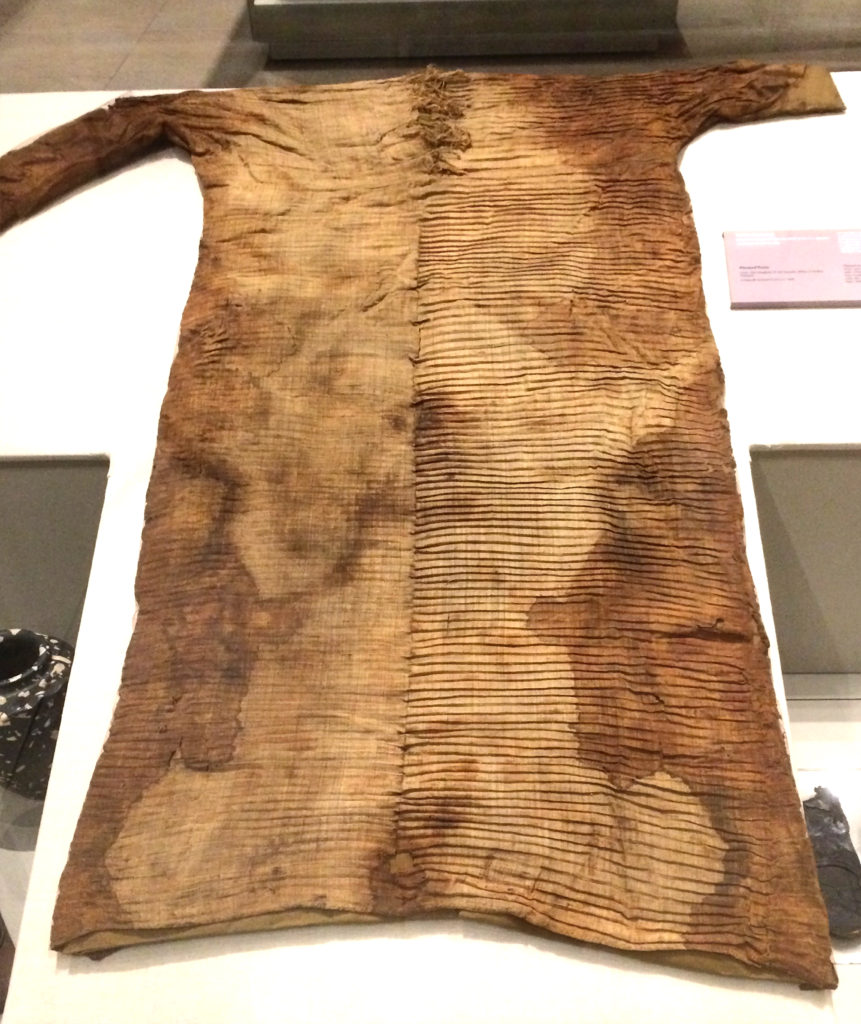
Three are on exhibit – two shown flat and a third shown wrapped around the remains of its former owner. The didactic panels say that it isn’t known how they were made. From the two that are flat, it looks like the fabric was woven on narrow looms and pleated horizontally before being seamed down the middle & sides.
If they were worn by living people, I’m guessing these were luxury garments. Pleats in linen are hard to maintain. Unless the Egyptians had some long-lost linen-pleating technique equivalent to Fortuny’s silk method, they would have had to reset the horizontal pleats every time the dresses were worn to keep them looking sharp, especially if the wearer sat down!
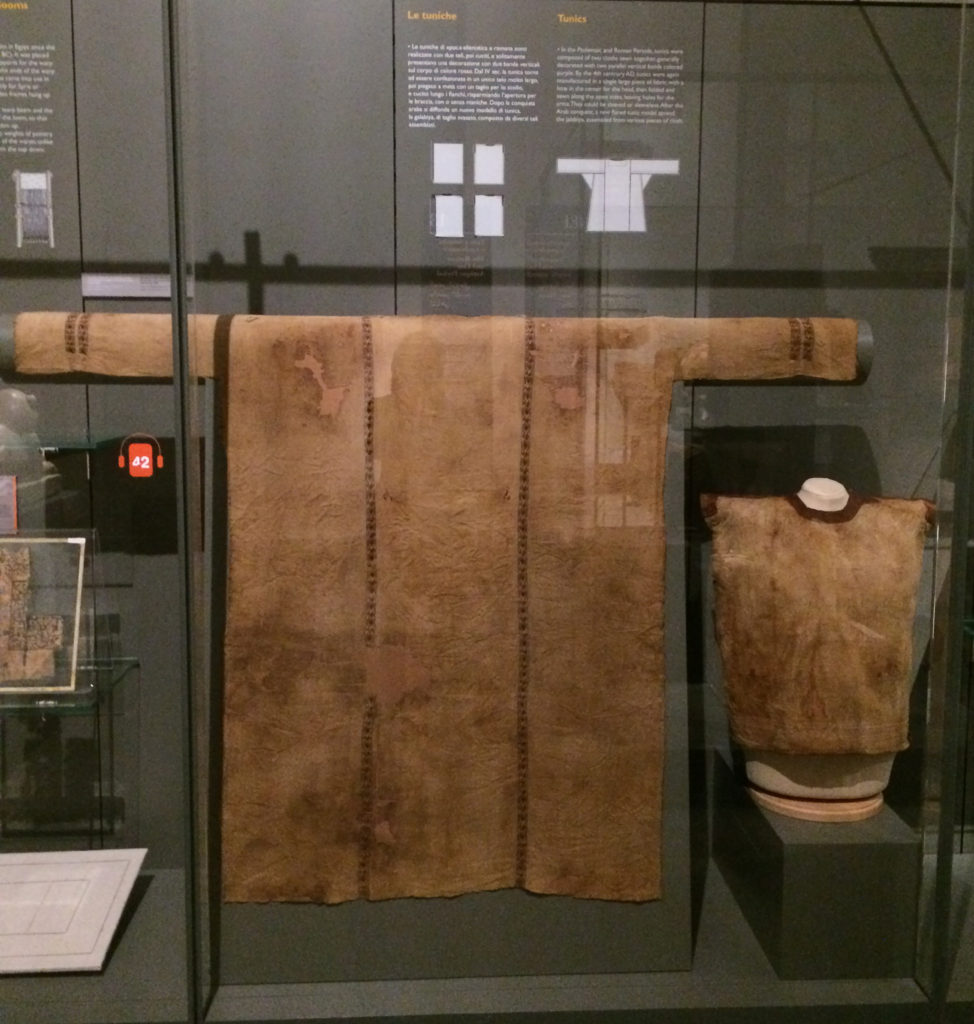
The shape of the pleated gowns looks as if they were made from a series of rectangles, pretty much like the tunic and top on the right.
Oddly, the diagram on the wall behind the tunic and top is different from either – it shows what looks very much like the side-gores-and-underarm-gussets cut that’s still in use in some ethnic costume and historical recreationist garments.
In fact, it was still taught in sewing classes in Europe into the 20th century. The Textile Museum in Toronto has a set of quarter-scale garments that were made as part of a professional seamstress’s graduation exercise in the 1930s, and some of the pieces use the same cut. Shows how long a good and practical design can persist!
More clothing
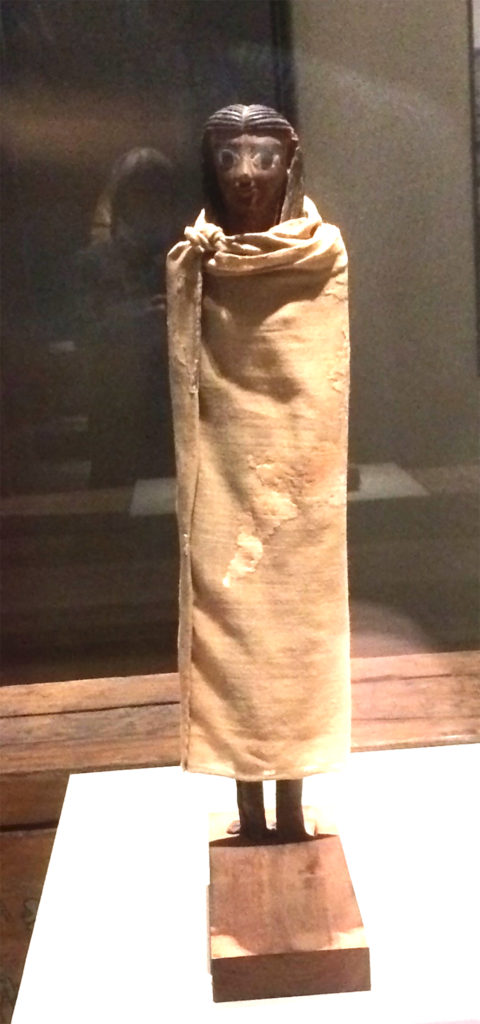
But back to the Museo Egizio – not surprisingly, some of their textiles are clothing. A couple of the better-preserved are this small, dour figure swathed in a cloak and the underwear of a man named Kha – about whom more later.
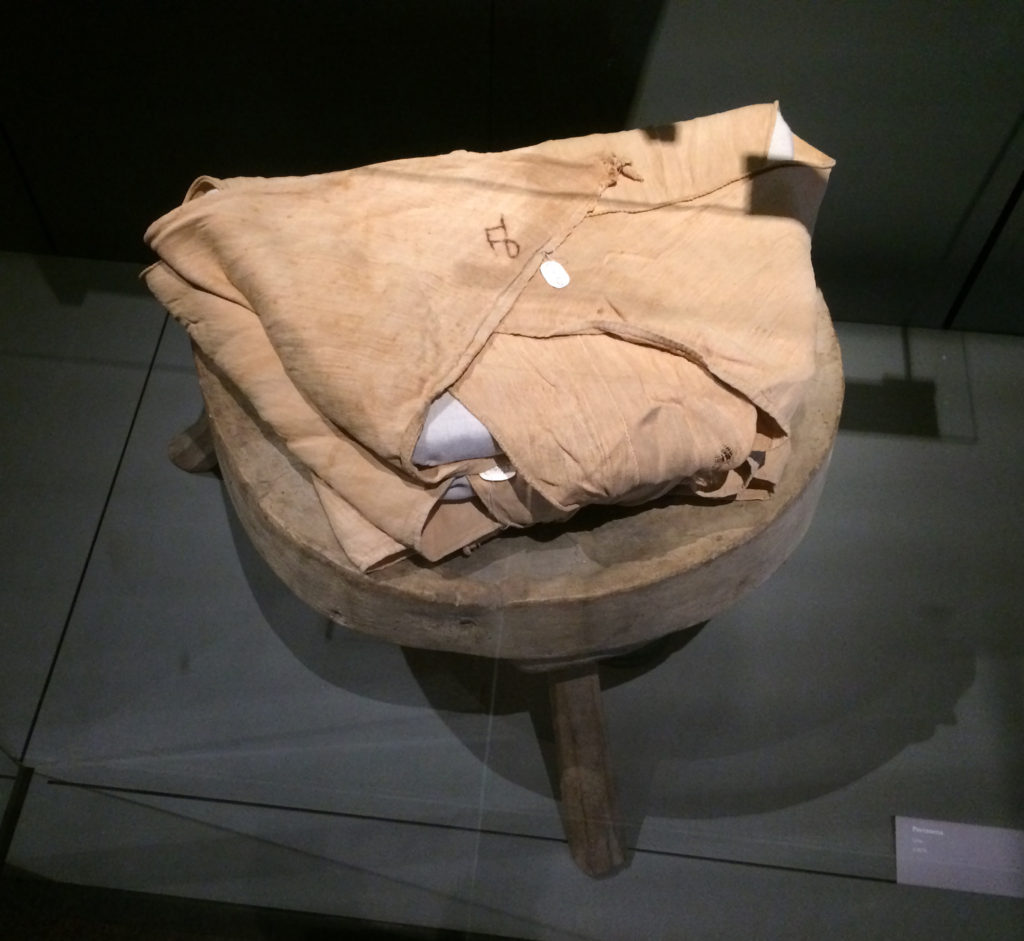
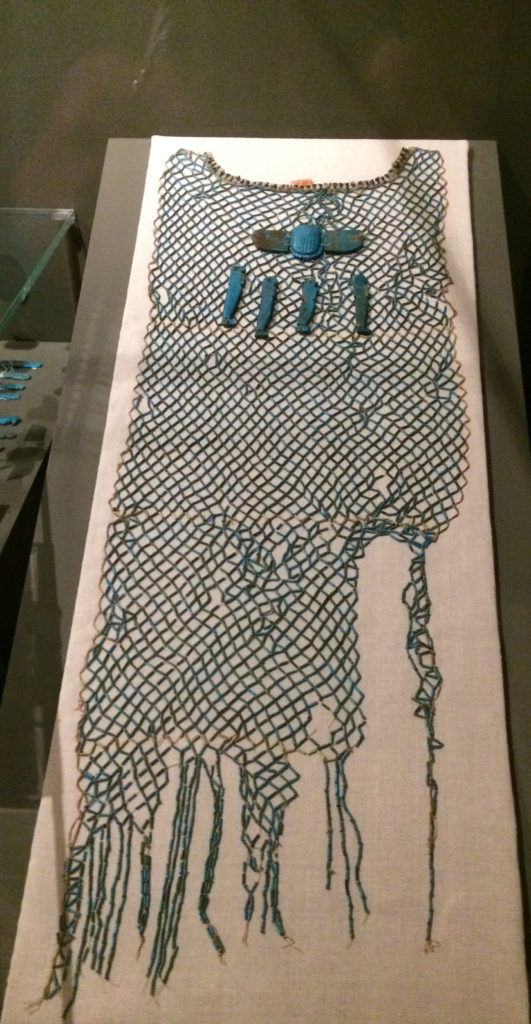
There are also several beaded net dresses in various states of repair, ranging from a boxful of beads & broken strings, to this one, which is in pretty good condition, considering!
A random selection of other fibre stuff:
Aside from clothing, the Museo has lots of fibre items used for other purposes.
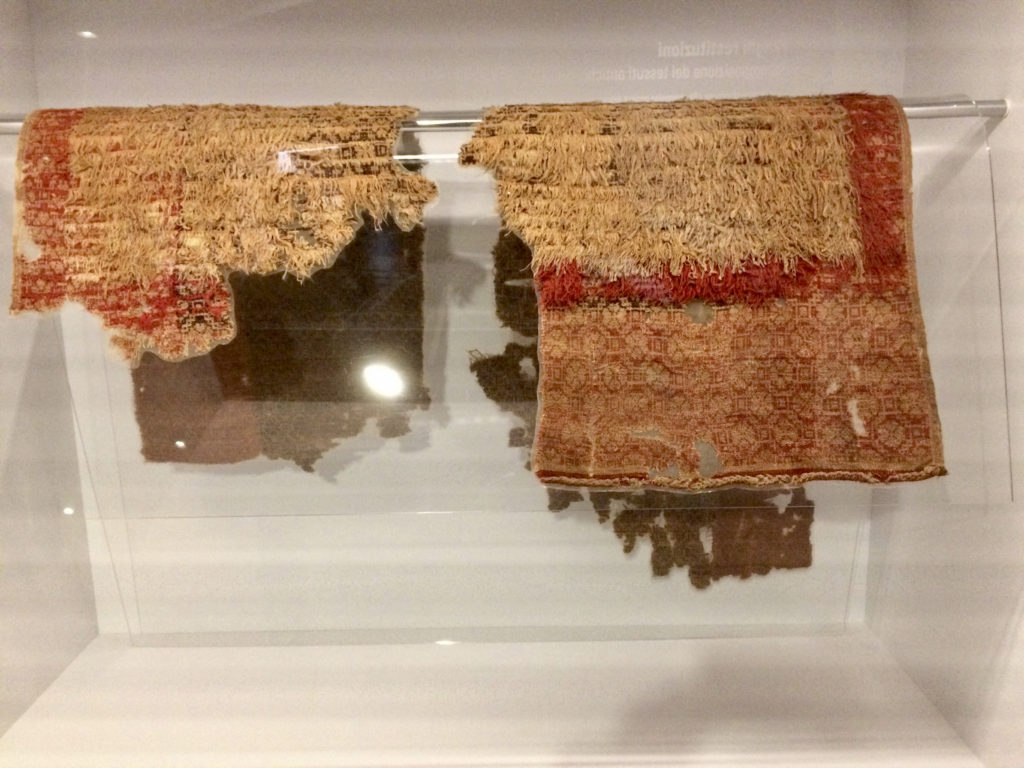
A saddle cloth or horse blanket
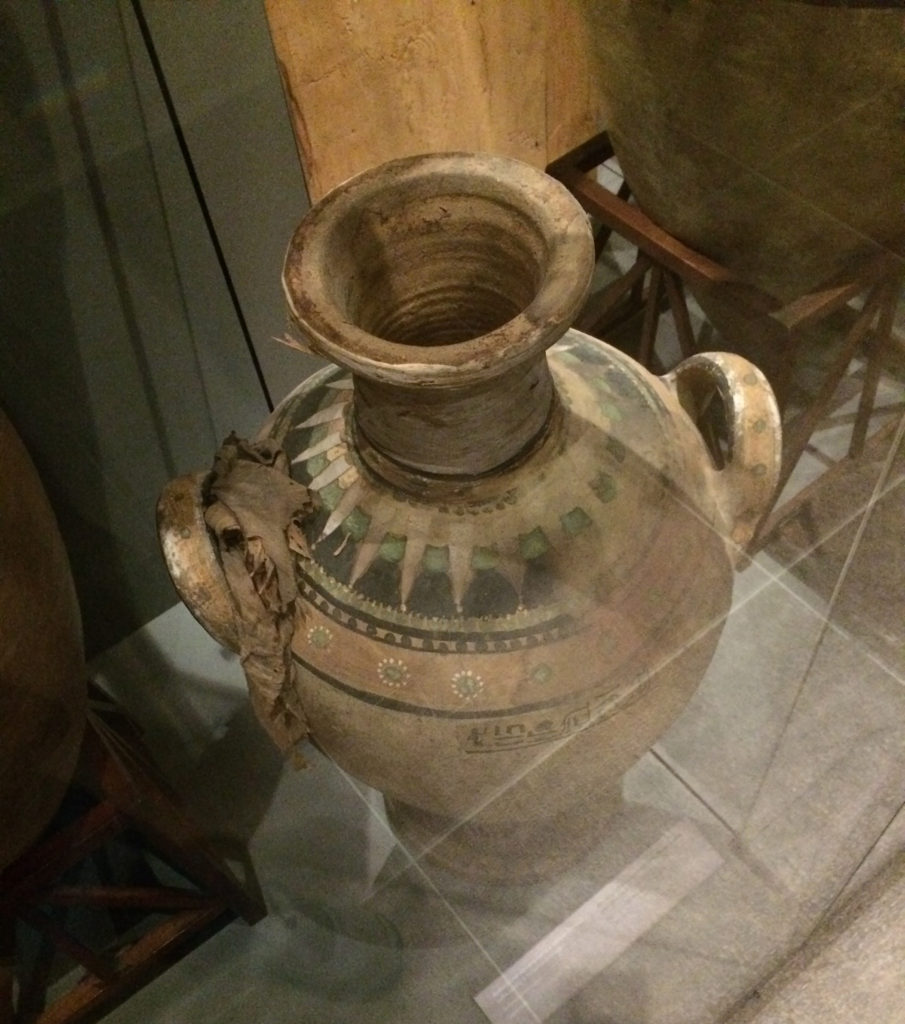
A rag left tucked through the handle of a jug
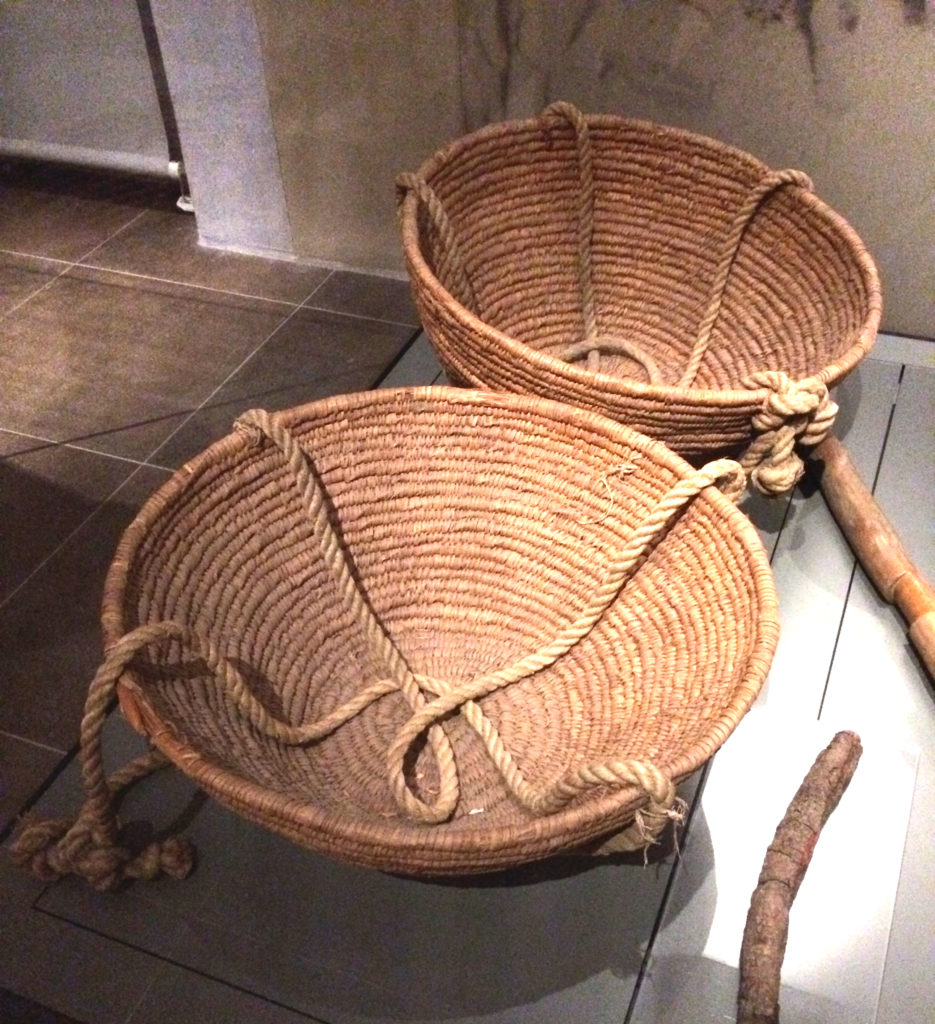
Linen rope handles for baskets
Seals for jars, some of them crisply tidy, some not so much.
Linen seems to have been the go-to material for closing jars. There were so many I could have done a whole (probably very dull) post about them! Though I did find the various patterns on the tops fascinating – the pic with the five tidy seals shows several typical ones.
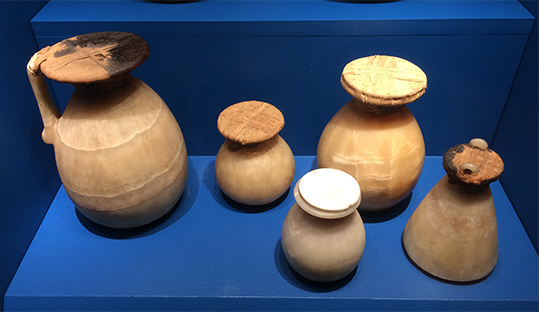
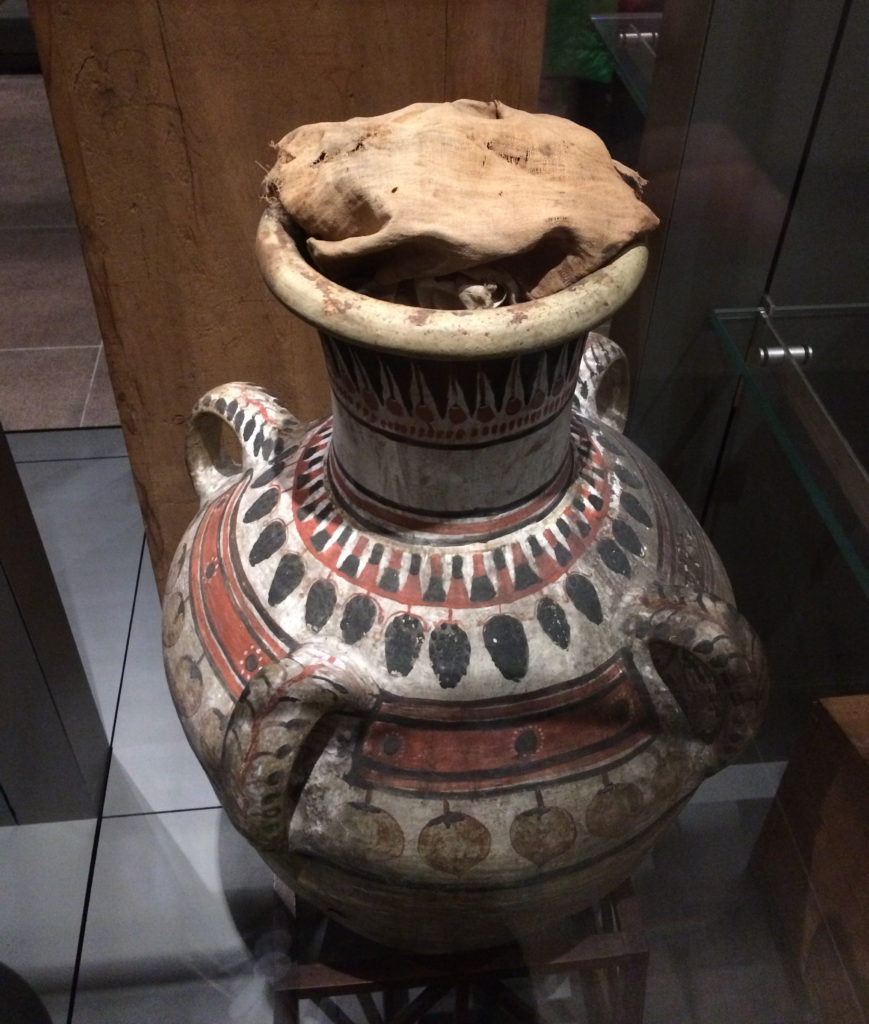
But, disappointingly, no “blankets and sheets” – though, according to the text on the cases showing the beds from the tomb of Kha and his wife Merit, the exhibit should include their blankets and sheets.
Sadly, it turns out that, to protect the blankets and sheets from light damage, they are no longer on display.
I’m sure the Museo has lots more fibre and textile holdings – but, like with Merit’s blankets and sheets, to preserve them, they need to limit the amount of time they’re on display. Unlike stone, pottery, and metals, most of which can withstand exposure to light more or less indefinitely – textiles and artefacts made of fibre deteriorate comparatively quickly.
And the obligatory mummies: Merit and Kha
And speaking of Merit and Kha, their undisturbed tomb was discovered at Deir el-Medina by Ernesto Schiaparelli[i] in 1906. Kha was an architect, and Director of the Royal Works in Deir el-Medina, a major funerary complex, where he oversaw the construction of the royal tombs. While the objects from their tomb have been analyzed, their mummies have not been unwrapped and are are featured in Archeologia Invisibile (Invisible Archaeology), a temporary display at the Museo.

Archeologia Invisibile uses enhanced Neutron Tomography, Radiography, and Prompt Gamma Activation Analysis techniques to look within their linen wrappings. The detail is amazing; it moves through the layers of the mummy from completely wrapped (its actual state) to the bare skeleton. (And no, I don’t know what Neutron Tomography etc. entail; I’m quoting a research paper abstract.)
I found the info on Merit’s mummy fascinating. The imaging shows her wig, her jewellery and traces of clothing. It also shows that her skeleton is a mess – her ribs are displaced and her spine is dislocated. Either she died from a catastrophic accident or the people preparing her body for burial were hamfisted and inept. Or both.
But I digress; what really surprised me was the back view of her mummy. I had always assumed that the back of a mummy was pretty much like the front – wrapped in overlapping strips of linen. But no; the outer layer of Merit’s mummy is a sheet of fabric, snugly wrapped and fastened down the back with a series of tucks and stitches that look very much like a braid!
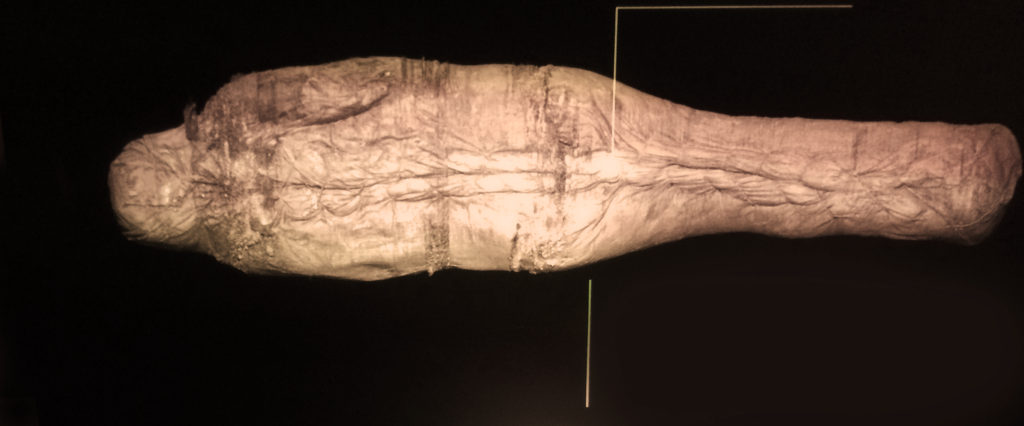
Archeologia Invisibile was incredibly difficult to photograph; it seems an iPhone was not the ideal camera. The colour effects were the weirdest – this pic (the best one I got) of the back of Merit’s mummy came out in shades of fluorescent pink and fish-belly white, with odd greenery-yallery highlights here and there around the edges. It took a serious Photoshop session to calm the colours down to the point where you can see what you’re looking at.
If you want to more science about Merit and Kha and their tomb, here’s a link to a Public Library of Science article with lots & lots & lots of technical information!
One more item!
There is SO much more I would have wanted to see, but by the time I got through the permanent exhibit and Archeologia Invisibile, I was done. No energy left to go back & look for details or take pics I had missed, so I headed to the Museo’s bar/café.
On my way, I was a delighted to find that essential tool – a yardstick. It had belonged to our old friend Kha, the architect. He tailored stone, not fabric – but he still needed to measure it!

It’s not actually a yardstick, it’s a “royal cubit”; the didactic panel gives an explanation, so I took a pic. The museum lighting and the school group in the background make it a challenge, but here it is!
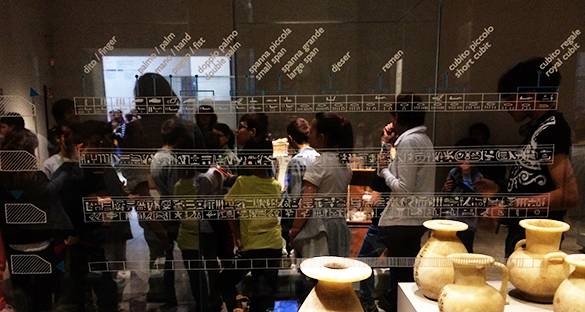
Then I had my coffee, and headed back to the bus.
If you ever have a chance to visit the Museo Egizio, I heartily recommend it. And you don’t have to speak Italian – they have English audio tours and the exhibit labels and information materials include English. And most of the staff make a creditable attempt at English.
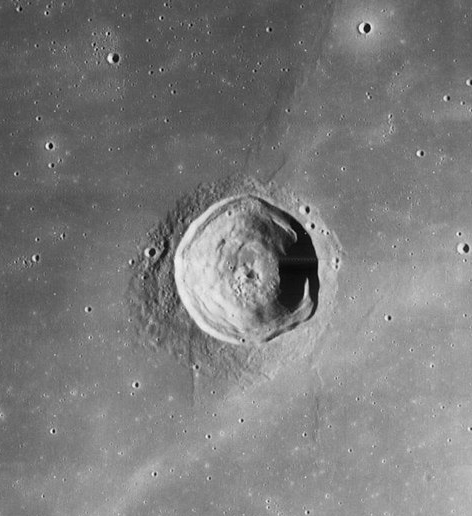
[i] A talented family!
Schiaparelli the Egyptologist was a relative of both Schiaparelli the astronomer, after whom this crater on the moon is named and Elsa Schiaparelli, the couturiere, who gave us some amazing designs, like this hat, this sweater, and a shade of pink that was shocking at the time – and is still called “Schiap pink” (there’s a bit on the heel of the hat) .
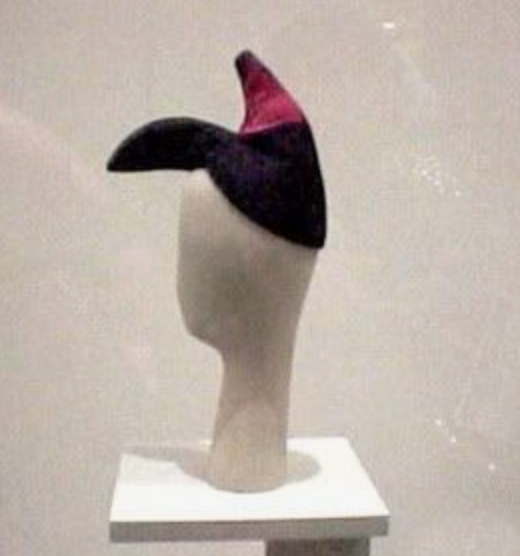
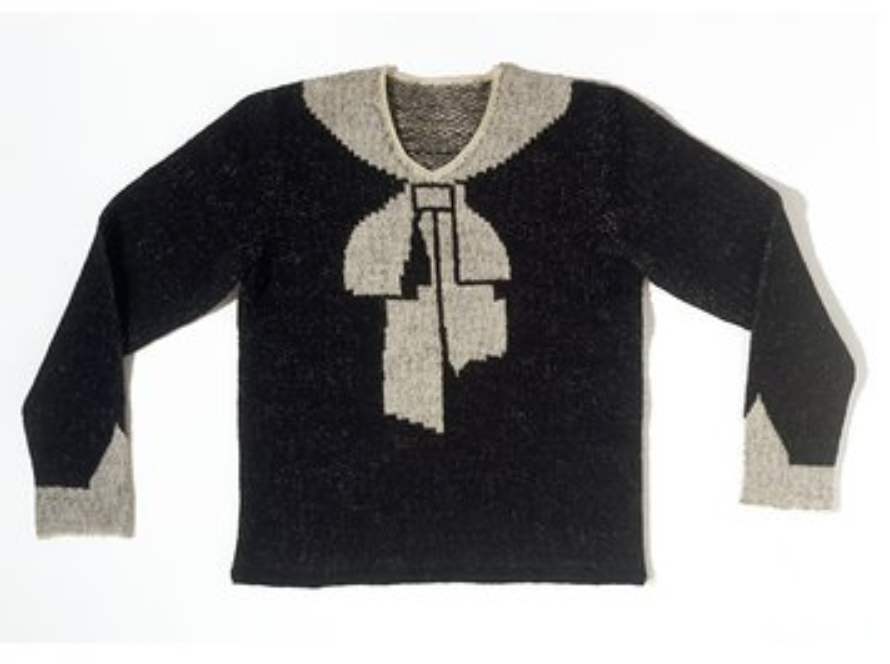

Recent Comments